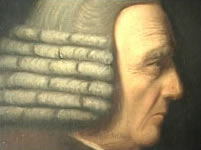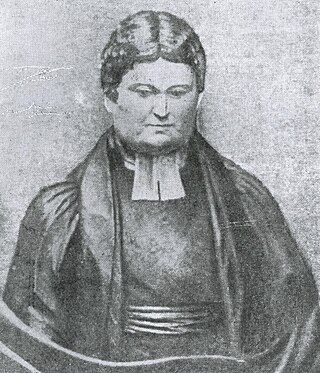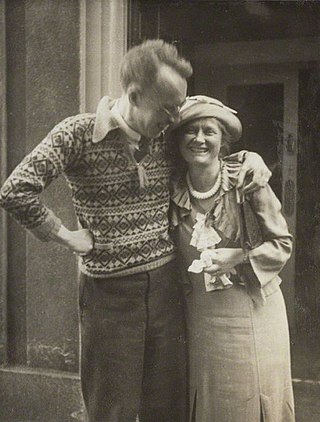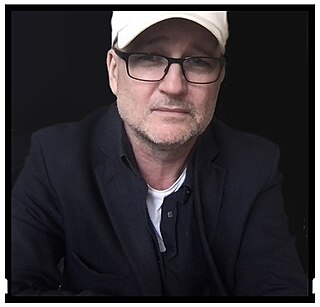
Emanuel Swedenborg (, Swedish:[ˈsvêːdɛnˌbɔrj] ; born Emanuel Swedberg; was a Swedish Christian theologian, scientist, philosopher, and mystic. He became best known for his book on the afterlife, Heaven and Hell.

James John Garth Wilkinson, was an English homeopathic physician, social reformer, translator and editor of Swedenborg's works, and a writer on Swedenborgian topics.

Sir Isaac Pitman was an English publisher and teacher of the English language who developed the most widely used system of shorthand, known now as Pitman shorthand. He first proposed this in Stenographic Soundhand in 1837. He was vice-president of the Vegetarian Society. Pitman was knighted by Queen Victoria in 1894.

Swedenborg's Flying Machine was first sketched by the Swedish scientist Emanuel Swedenborg in 1714, when he was 26 years old. It was later published in his periodical, Daedalus Hyperboreus, in 1716. While Leonardo da Vinci’s designs predate those of Swedenborg, da Vinci’s manuscripts remained unknown due to a variety of circumstances until the late 19th century. So, in terms of influence, Swedenborg predated da Vinci.

William Cookworthy was an English Quaker minister, a successful pharmacist and an innovator in several fields of technology. He was the first person in Britain to discover how to make hard-paste porcelain, like that imported from China. He subsequently discovered china clay in Cornwall. In 1768 he founded a works at Plymouth for the production of Plymouth porcelain; in 1770 he moved the factory to Bristol, to become Bristol porcelain, before selling it to a partner in 1773.

The General Church of the New Jerusalem is an international church based in Bryn Athyn, Pennsylvania, and based on the Old Testament, the New Testament, and the theological works of Emanuel Swedenborg. The General Church of the New Jerusalem distinguishes itself from other Swedenborgian churches by teaching that the Writings for the New Church are the Heavenly Doctrine revealed by the Lord in His Second Coming and have authority equal to the Old and New Testaments. It is larger, newer, and more conservative than the Swedenborgian Church of North America.

Heaven and Hell is the common English title of a book written by Emanuel Swedenborg in Latin, published in 1758. The full title is Heaven and its Wonders and Hell From Things Heard and Seen, or, in Latin: De Caelo et Eius Mirabilibus et de inferno, ex Auditis et Visis. It gives a detailed description of the afterlife; how people live after the death of the physical body. The book owes its popular appeal to that subject matter.
The Fetter Lane Society was the first flowering of the Moravian Church in Britain, and an important precursor to Methodism. It was founded in 1738. Although the original meeting house was destroyed in the mid-20th century, the society still meets in London, and is part of the British Province of the Moravian Church.

The New Church can refer to any of several historically related Christian denominations that developed under the influence of the theology of Emanuel Swedenborg (1688–1772). The Swedenborgian tradition is considered to be a part of Restorationist Christianity.

The Arcana Cœlestia, quae in Scriptura Sacra seu Verbo Domini sunt, detecta, usually abbreviated as Arcana Cœlestia or under its Latin variant, Arcana Cælestia, is an 8-volume theological work published by Emanuel Swedenborg in the 1750s.

William Cowherd was a Christian minister serving a congregation in the City of Salford, England, immediately west of Manchester, and one of the philosophical forerunners of the Vegetarian Society founded in 1847. He was the founder of the Bible Christian Church; Cowherd advocated and encouraged members of his then small group of followers, known as Bible Christians or "Cowherdites", to abstain from the eating of meat as a form of temperance.

Colchester New Church is a Christian New Church in Colchester, England, which has as its theological basis the Old and New Testaments and the theological writings of Emanuel Swedenborg. Colchester New Church is part of the General Church of the New Jerusalem.
Robert Hindmarsh (1759–1835) was an English printer and one of the original founders of Swedenborgianism.
The Lord's New Church Which Is Nova Hierosolyma, usually referred to as the Lord's New Church, is an international, Christian church based on the Old Testament, the New Testament, and the theological writings of Emanuel Swedenborg, which its members view as the Third Testament.

Signe Kirstine Toksvig was a Danish writer. She contributed to The New York Times, the Nation, The Atlantic, and other periodicals, and also published several books, including biographies of Hans Christian Andersen and Emanuel Swedenborg. Her life and work, and obstacles she encountered, has also been the focus of scholarship by others. She lived parts of her life in the United States and Ireland, and all her writings were in English.

Stephen McNeilly is a London-based artist and writer whose research-lead practice includes photography, filmmaking, curating and book publishing. He is the executive director and museum director of the Swedenborg Society, London, and oversees its annual Swedenborg Film Festival and Artist in Residence programme. He is also the founding editor of the Swedenborg Review.

Samuel Noble (1779–1853) was an English engraver, and minister of the New Church (Swedenborgian).
Augustus Clissold was an English Anglican priest. He is known as a Swedenborgian, who was active in later life publishing his views.

The Great Stockholm Fire of 1759 was the city’s greatest fire since 1686. It raged in the Eastern Södermalm on Thursday, 19 July, and over the following night, reduced about 20 blocks with about 300 houses to ash, and rendered about 2000 persons homeless. While no deaths were reported, there were 19 injuries. In Sweden, the fire is named Mariabranden after the Maria Magdalena Church, which was severely damaged. Outside Sweden, the fire is most famous because an occult anecdote claims the scientist and mystic Emanuel Swedenborg by a sort of clairvoyance could ”see” the fire from Gothenburg.
John Spurgin (1796–1866) was an English physician. He is known as a medical writer, inventor, and follower of the works of Emanuel Swedenborg.














